Sections
- Antibiotics
- Artificial Sweeteners
- Aspirin & Stroke
- Blood Pressure Medications & Mineral Depletion
- Calcium
- Coenzyme Q10
- Diet & Lifestyle
- Food Allergies
- Nutritional Frontiers Purity & Potency
- Possible Imbalances From Medications
- Quality & Patented Research
- Quality, Purity, & Potency
- Targeted Nutrition
- The Benefits of Multivitamin Use Substantiated
- The Dangers of Over-The-Counter Pain Medications
- The Ins & Outs of Whey Protein
- Vitamin D Deficiency
- What’s In Your Multivitamin?
- Why Choose Nutritional Frontiers Vegetable Protein Over Competing Brands
Food Allergies Of Our Time
Food allergies and food sensitivities hold a prominent place in family life these days. Children and adults both deal with reactions to some of the foods they eat: reactions that range from mild discomfort to life-threatening anaphylaxis. Food allergies, skin allergies (like eczema) and respiratory allergies (like hay fever) are all on the rise. Why food allergies seem to be more common these days is a subject of debate. There are those that wonder about the role of modern agricultural techniques in North America, genetically modified organisms, and various causes of immune system malfunction.
The “hygiene hypothesis” is a compelling theory suggesting that excessive cleanliness in the developed world, seen particularly among higher income level populations and those living in urban or suburban areas, disrupts normal immune system development. Exposure to germs, soil, and certain infections contribute to normal immune system development, whereas cultural/social choices that excessively avoid exposure to germs and dirt allow different parts of the immune system to dominate, promoting an allergic constitution. Also, the recent trend of delaying introduction of potentially allergenic foods (like peanuts) to infants’ and toddlers’ diets may actually increase the incidence of food allergies!
Whether the immune dysfunction seen in food allergies and food sensitivities is related to environmental contaminants (such as pollutants or tobacco smoke), genetic susceptibility, repeated exposure to the same foods again and again, the hygiene hypothesis, overuse of certain medications, or something else, the fact is that food allergies are a troubling reality for many families.

Food Allergies Vs. Food Sensitivities
You may hear people speak about food allergy, food intolerance, or food sensitivity. The term “allergy” is generally limited to the recruitment of certain antibodies in the immune system. An antibody, also called an immunoglobulin, is simply a protein in the bloodstream that is produced in response to antigens (foreign bodies). Strictly speaking, food allergies are mediated by an antibody called 1gE. An IgE food reaction is classified as an “immediate hypersensitivity” reaction, in which the allergic reaction occurs shortly after ingestion and manifests as some or all of the following symptoms: hives, itching of the skin or mucous membranes (e.g., in the mouth, lips, throat), difficulty breathing, and, in severe cases, anaphylaxis.
In contrast, other antibodies (IgG, IgA, etc.) are thought to immediate a delayed hypersensitivity response, in which the reaction to food occurs 24-48 hours after consumption, or even longer. Delayed food reactions can include such far-ranging symptoms as headaches, intestinal cramps, stool changes, arthritis, muscle spasms, and more.
After repeated exposure to the offending food, the IgG antibody levels increase. Over time, the IgG antibodies can result in excessive food-antibody complexes which may tax the immune system. This delayed hypersensitivity reaction is commonly referred to as a food intolerance or food sensitivity.
People suffering from food allergies or food sensitivities can help repair their bodies’ adverse reactions to foods in a number of ways. First, they need to avoid the food allergens for awhile in order to rest their gut and immune systems. While avoiding the offending foods, people can eat healthy foods and take certain supplements to help repair the digestive tract and immune system, in order to promote a healthy response to foods.


